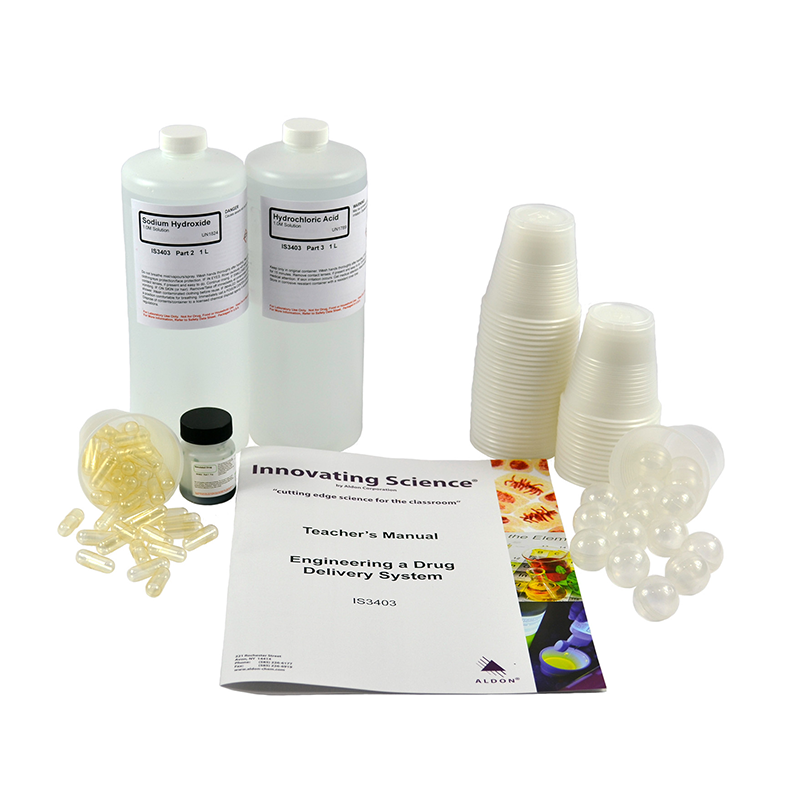


Biomedical engineers design devices, equipment, and processes to improve medical treatment methods and the quality of human health and life. They apply engineering principles to biology and medicine to create products such as prosthetic limbs and artificial organs, among other things. One major focus of biomedical engineers is the design of drug delivery systems, which can control the transport and release of medicine in the body to more effectively treat diseases and illnesses. In this experiment, students will gain an understanding of drug delivery and its importance by testing simulated delivery systems in multiple environments that mimic different parts of the body. The delivery systems will be analyzed and compared, allowing students to engineer an optimal solution and learn what properties must be considered when designing new drug delivery systems.
Resources

